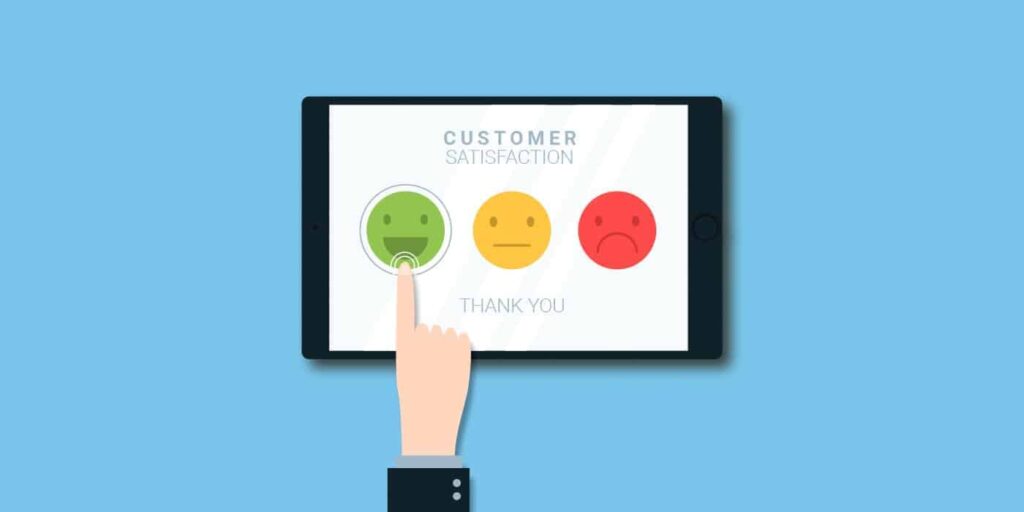As the systems of IT continue to grow in number, scope, and importance to the business, what we sometimes overlook is that for every system IT deploys into the business, there’s a community of users relying on that system to perform their jobs every day. This fundamental dependency has only grown, and every business now relies more on technology to perform essential daily tasks in virtually every role across the organization, large or small. With this remarkable growth in the role of technology in every business every day, it translates to that we as IT professionals must invest more time, energy, and focus on the user experience.
This user can be an internal employee, a partner of the business, a reseller, a consultant, an advisory service, or of course the precious customer. It doesn’t matter because each of these constituents has the same fundamental need for a great user experience.
These systems under the stewardship of IT can be sales applications, customer relationship management (CRM) solutions, financial systems, billing systems, human resources (HR) systems, infrastructure management tools, IT service management (ITSM) systems, security applications, compliance solutions, and much more. These systems are everywhere in the business today.
Without a focus on improving the user experience, and the appropriate level of investment necessary, we risk creating a gap, and potentially a growing gap, between what our users expect of these systems and what the systems of IT are able to deliver. A growing gap could then create a problem for the business and in some cases can weaken the business to the degree that the very future of the organization can be at risk. We have learned in the past 10 years that businesses unable to successfully leverage technology while delivering a great user experience will ultimately fail. The stakes are thus higher than ever.
Let’s look at 4 things that can improve the user experience and help deliver the maximum value from the systems of IT across the business and to the people that are the lifeblood of the organization.
#1 Create the Connection
The beginning of a better user experience requires the appropriate teams of IT to make a connection with, and to create, an ongoing dialogue with the users themselves. There’s no substitute for this engagement – a seemingly simple thing, but very much missing in many IT organizations today. It’s right there in front of us and fully under our control so when we create this relationship with our users and start the process of communicating around a mutual goal of focusing on the user experience, we’ll normally begin to see good things happen immediately.
The good news is that most users are happy to create this relationship and happy to provide direct and honest feedback. Users are not shy. This healthy dialogue is good for everybody – both the people in the IT organization seeking to improve the experience of the many users of IT systems and the users themselves who will universally appreciate the efforts of IT to improve their daily work, their productivity, to drive time savings, and to make them better at their jobs. It’s a beautiful thing when this powerful partnership takes flight.
A key skill here is listening and listening closely. Yes, it might seem like an obvious thing, but it bears repeating that the most productive meeting we can have with a user or customer should be spent asking simple questions and then listening carefully to the feedback we receive.
This simple exchange will tell us everything we need to know.
#2 Set Clear Goals for User Experience
A desire to improve the user experience of any system managed by IT is the right start and this naturally brings some excitement on the part of the users, but at the same time “an improved user experience” is a broad charter and so it’s necessary to set clear goals from the very beginning. This is important for the IT organization tasked with delivering the improved user experience and necessary for the users themselves in order to understand exactly what will be delivered, what will not be delivered, and to provide a baseline against which we can measure success.
These goals should be developed jointly with the users, and shaped in language the users can understand. A good way to look at this is to fast forward to the delivery of system updates and enhancements that will improve the user experience. At this important time, how exactly will we determine success? What exactly will be delivered that will meet the requirements and expectations of the user? A little thoughtful planning here is necessary to help ensure a productive program and a successful result. When in doubt, fewer goals are better, and these goals should be referred to throughout the delivery process as they can clarify priorities, the scope of investment, and the final process of user acceptance.
Remember, these goals must be crafted in terms of the user perspective and include enough structure to enable us to confirm success when system improvements are delivered.
#3 Start with an “Easy” User Experience
Asked to describe a great user experience in just a few words, most users would include the word “easy” in that description. Easy is a wonderful thing when and where we find it. Let’s be clear, this does not mean the system is limited, or lacking key capabilities – far from it. What the highest form of “easy” brings us is the ability to do everything we need to do, at a high level of quality, while at the same time making the process such that no time is wasted and the experience is intuitive and requires a minimum of training and orientation. The very best user experiences can take on new users quickly and enables them to perform their jobs with little or no prior system experience. Think in terms of a new hire that will be required to use the system in question. What does it take to make this new user productive immediately?
A recent example I’ve seen is a business that struggled with the system(s) that provide a sales quote to customers. This challenge only came to my attention as it was on the short-list of critical issues for a CIO I was working with on an unrelated ITSM project. Quoting is a critical business function and the existing process was requiring multiple steps of error-prone data entry, redundant information, complex pricing structures, and multiple approvals. This process was frustrating to the sales organization and frustrating to customers that were forced to wait far too long.
The IT organization took on the mission to greatly simplify and streamline this process and, through working closely with a group of systems users, was able to deliver a dramatic improvement that reduced the quoting process from an average of one week to a same-day turnaround in most cases. This improvement was taken on by a small team in IT and it had an immediate impact on the business including sales, marketing, account management, and executive management – all of which had repeatedly heard frustrations from customers.
It helps to recognize that an increasing amount of system access and usage is occurring on mobile devices and as such, this use case is where we should begin to ensure a great user experience. In recognizing the shift of business processes to mobile devices, easy becomes even more central to the new user paradigm.
#4 Transparent Design and User Testing
Transparency throughout the process of working with users to improve the user experience is an important goal to keep. Transparency creates a natural vehicle for communicating quickly and clearly with users and helps to avoid misunderstandings and mismatched expectations.
Regular reviews with users should be done on a scheduled basis to share ideas and can include early mock-ups and progress updates throughout the improvement process. This process can be extended to include hands-on user testing of early pre-production versions. We will discover that users see things a bit differently and explore paths that won’t be addressed by traditional testing processes.
I worked with a leading health-care organization in which the ITSM self-serviec portal had been a big disappointment by any measure and they took on a project to improve this self-service capability and it quickly became clear the problem was a bad user experience and a portal that was difficult to use, unattractive, and complicated. The ITSM organization created a small user experience team, met with system users to define goals and improvements for the enhancement project and then provided weekly updates and early previews of the planned changes throughout the process.
Fast forward to the release of the upgraded self-service portal, and it was a big success and welcomed by the users as a complete turnaround from the initial solution which had little or no user involvement. Transparency was a key part of this successful result from the very beginning.
We simply can’t underestimate the impact of the user experience to the vital daily work that occurs throughout IT and the business every day. This impact can be both a negative one in the case of a poor user experience and the natural and remarkably powerful positive impact of a great user experience. A great user experience can help every employee perform their job better every day and in turn deliver our very best service to customers.
I hope these four examples will help your organization take IT user experiences to the next level.
Keep the faith my friends.
Would you like to read an article on service availability or availability management in ITSM?
Want more? Here are two ITIL articles:
Are you looking for an article on the ITIL 4 Service Desk, organizational change management, or enterprise service management?
Want more? Here are informative ITIL 4 service value system and ITIL 4 service value chain articles.
Kevin J. Smith
Kevin is the President and Founder of the IT Transformation Institute offering advisory services, IT and ITSM health-checks and assessments along with best practices training for IT Operations, Service Desk, Service Management and IT Transformation.
With degrees in Chemical Engineering and Computer Science, Kevin spent the first 10 years of his career at the NASA Johnson Space Center in Houston, working in Mission Operations for the Space Shuttle Program. Following his time with NASA, Mr. Smith spent over 15 years with Ivanti and HEAT Software assisting global IT organizations with operating improvements, and leveraging software solutions to help IT perform better.
Kevin is the best-selling author of The Practical Guide to World-Class IT Service Management (March 2017), The IT Imperative (April 2018), One IT, One Business (April 2019) and The Humanity of IT (May 2021) and was named one of the world’s top 10 Service Management experts in 2019 and one of the world’s top 100 Technology Influencers in 2020 and 2021.
Organizations Kevin has assisted in making strategy and operational improvements include Adidas, Apple, BMW, Boeing, Children’s Hospital, Circle K, Cleary Gottlieb, Cleveland Clinic, NYU, Oxford University, Pizza Hut, Rolex, US Navy, Valero, and Wells Fargo.


One Response
Good pointers on how to go about improving User Experience… Informative read!